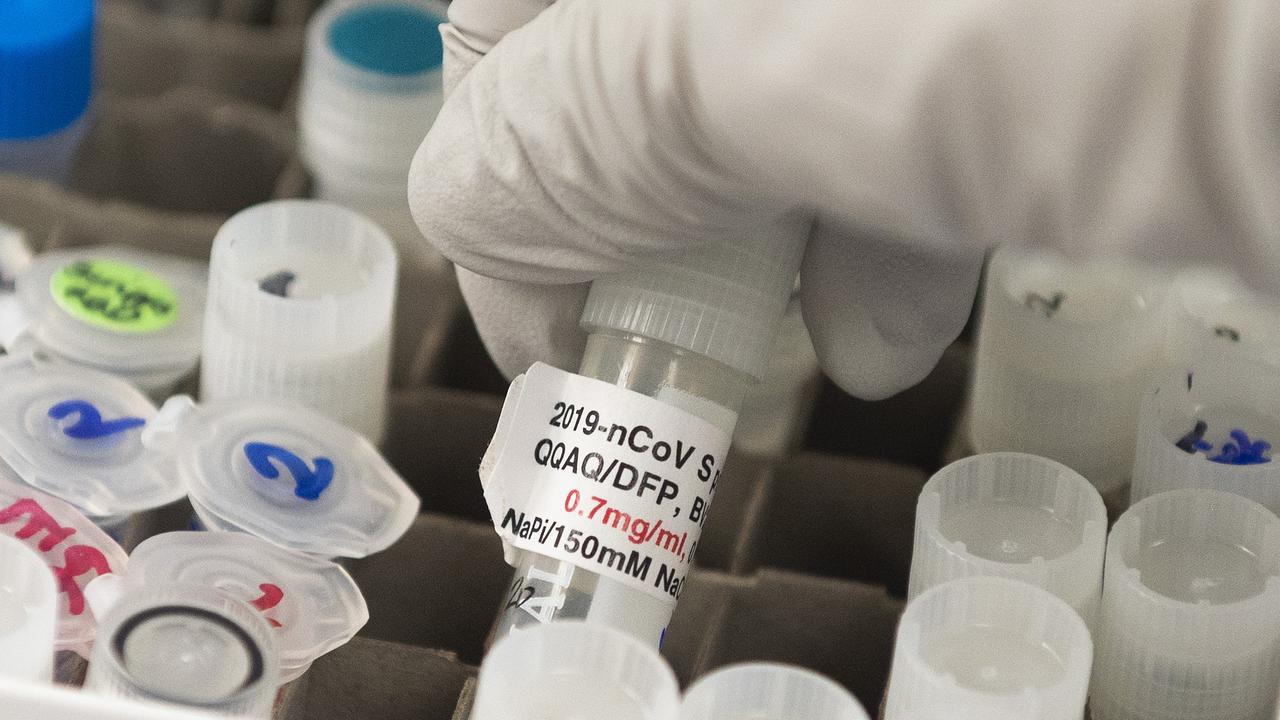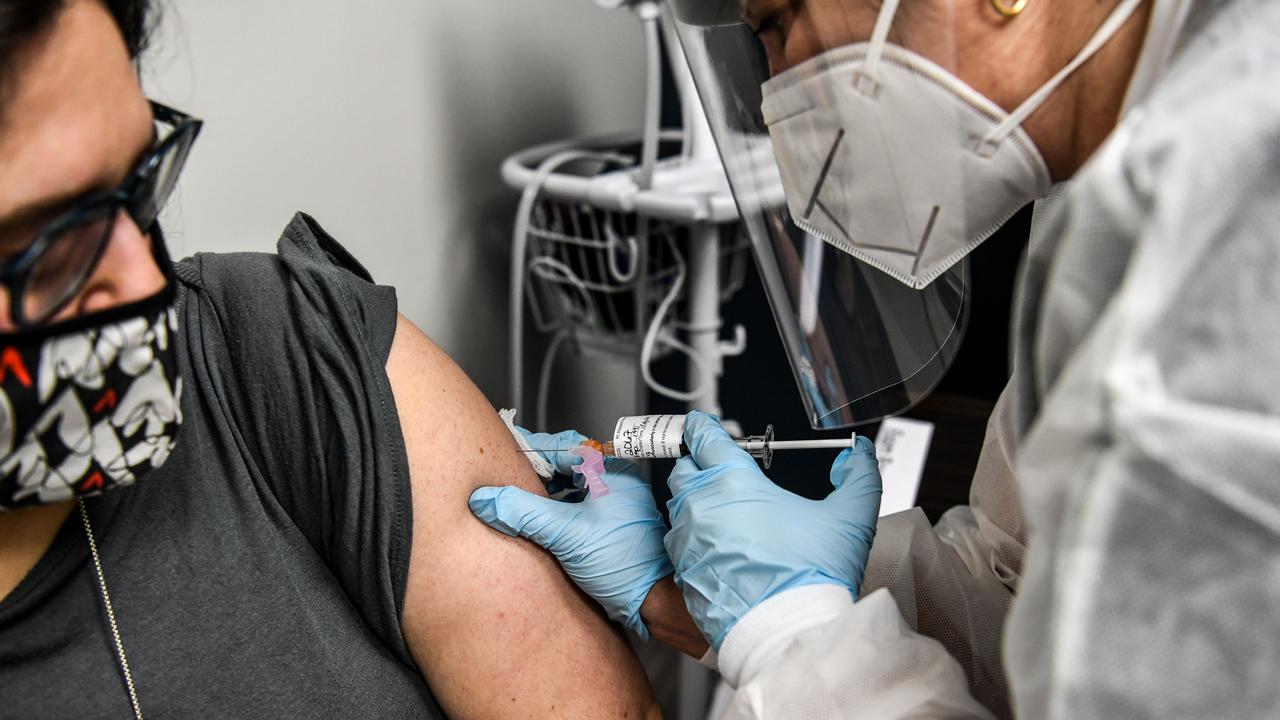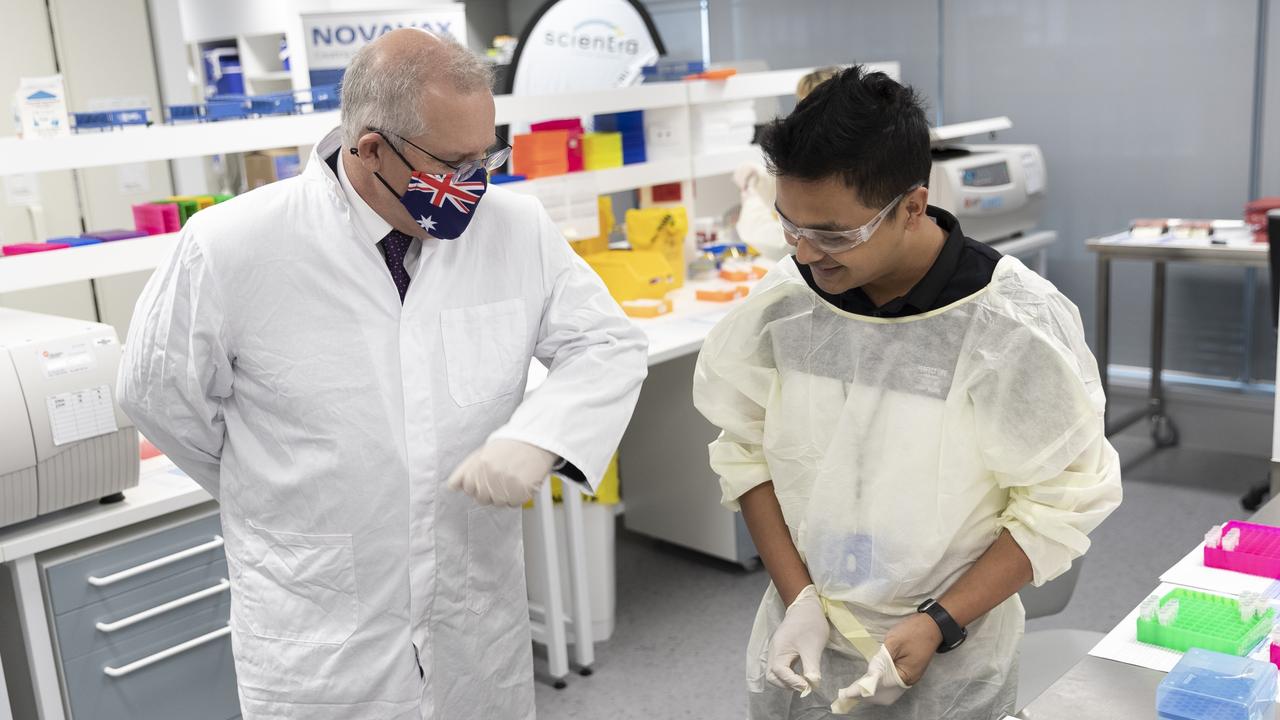Moderna and Pfizer vaccines: Are these promising vaccines safe and will they be available in Australia?
Two COVID-19 vaccines have been revealed to be more than 90 per cent effective but are they safe and will they be available in Australia?
Hopes for a speedy coronavirus vaccine have been boosted with announcements that two potential candidates are more than 90 per cent effective.
The results have exceeded the expectations of experts and could mean doses of the vaccines may be available in the US by the end of the year.
But one of the reasons these vaccines have been produced so quickly is because they use an experimental technique for producing a new type of mRNA vaccine, which has never been approved before.
Both the Moderna and Pfizer vaccines use mRNA technology and the novel nature of the vaccines have raised questions about how safe they are.
Up to now vaccines have been developed using a weak or dead version of a virus, or by using a laboratory-made protein.
For example, the development of a flu vaccine can involve creating a diluted form of the virus by incubating it in chicken’s eggs.
However, mRNA vaccines can be created entirely by scientists in a laboratory using chemicals, enzymes, bacteria or live cells.
RELATED: Aussies who could prolong the pandemic

Essentially the scientists make a synthetic version of the virus’s messenger ribonucleic acid (mRNA). Once this is injected into the body, the mRNA prompts the body to make a particular protein, which is detected by the immune system and this causes the immune system to make antibodies to fight against it.
The vaccine basically trains the body what to do if it comes into contact with the protein again.
Traditional vaccines also coach the body on how to fight a virus but this is done through injecting tiny amounts of the virus or the protein into the body, rather than triggering the body to make the protein itself.
ARE THE VACCINES SAFE?
Professor of Immunology, Magdalena Plebanski of RMIT University, told news.com.au that the nice thing about mRNA vaccines is that they don’t last long.
“After it is used to make the protein to induce the immune response, that’s it, it disappears,” she said.
“It’s not something that hangs around for a while so it’s expected to have a high safety profile,” Prof Plebanski said.
However, Prof Plebanski said while scientists did understand parts of how the mechanism worked, they didn’t understand 100 per cent why the vaccines were so effective.
“We still don’t know how it activates such a strong immune response,” she said.
This is why careful testing of the vaccines’ safety is important and Prof Plebanski said this was happening. Participants in final Phase III trials of both the Moderna and Pfizer vaccines will be monitored for up to two years.
RELATED: Coronavirus could ‘fight back’ against vaccine

Prof Plebanski said the reason why the vaccines were developed so quickly is because of the massive injection of funding and attention on finding a treatment for the coronavirus.
Prior to the pandemic, mRNA technology was already quite reasonably advanced and was being developed for use on other diseases. The process for developing the vaccines had also been through initial safety trials.
“As far as I can see there is no skimping on any monitoring safety,” Prof Plebanski said.
She said every single vaccine was being put through the process set out by peak regulatory bodies in the US and Europe, which considered safety their most important factor.
“There are benchmarks they have to hit before they can be considered safe,” she said.
“They are being put through the wringer and they have to be, there should be no shortcuts.”
MODERNA VACCINE
US biotech firm Moderna announced on Monday that its vaccine mRNA-1273 is 94.5 per cent effective.
Out of 30,000 people who participated in the Phase III trial, just five people caught the coronavirus among the vaccinated group, while 90 people in its placebo group were infected.
Two doses were given to the participants 28 days apart.
Adverse reactions to the vaccine were generally mild or moderate in severity and included injection site pain in 2.7 per cent of people.
The only other adverse reactions seen in more than 2 per cent of participants were recorded after the second dose and included fatigue (9.7 per cent), muscle pain (8.9 per cent) joint pain (5.2 per cent), headache (4.5 per cent), pain (4.1 per cent) and redness at the injection site (2 per cent).
These symptoms generally didn’t last long.
RELATED: Moderna announces vaccine breakthrough

One advantage this vaccine has over its rival Pfizer version is that it doesn’t have to be stored in extremely cold temperatures.
The vaccine can be stored for 30 days between 2C to 8C, which is within the temperature range of a normal fridge. If it is stored at -20C it can last for up to six months.
In comparison the Pfizer vaccine needs to be stored at -70C, which requires a special freezer only found at major hospitals.
Moderna plans to apply for emergency approval in the US and the world within weeks.
When will it be available? Moderna expects to have about 20 million doses ready to ship in the US by the end of the year. It says it’s on track to produce 500 million to a billion doses globally in 2021, however, Australia has not secured supply of this vaccine yet.
PFIZER VACCINE
Not to be outdone, the US-German collaboration between Pfizer and BioNTech announced on Wednesday further trial results showing its vaccine to be 95 per cent effective.
This is good news for Australia as Prime Minister Scott Morrison revealed this month that the government had signed an agreement for 10 million doses of the Pfizer/BioNTech vaccine if it was successful.
The BNT162b2 vaccine also requires two doses, given 21 days apart.
The trials showed that of the 43,000 participants in the Phase III trial, only eight people in the vaccine group got the coronavirus, compared to 162 in the placebo group.
The vaccine was also found to be more than 94 per cent effective in people older than 65 years.
The only adverse reactions seen in more than 2 per cent of participants were fatigue (3.8 per cent of people) and headache (2 per cent).
RELATED: Pfizer announces vaccine is 95 per cent effective
The main limitation of the Pfizer vaccine is that it needs to be stored at -70C, which requires a special freezer only found at major hospitals.
Pfizer is developing GPS-tracked shipping containers with dry ice to try and get around this problem.
The company applied for emergency use approval from the US Food and Drug Administration for its vaccine on Friday (local time). The FDA said its vaccines committee will meet on December 10 to discuss the request.
When will it be available? About 1.3 billion doses are expected to be rolled out by the end of 2021. About 10 million doses are expected to be available in Australia from early to mid 2021 – subject to approval by the Therapeutic Goods Administration.
OTHER VACCINES WITH POTENTIAL
As well as the Pfizer candidate, Australia has also bought doses of three other promising vaccines.
This includes the University of Oxford vaccine, which is being developed by AstraZeneca based on a chimpanzee adenovirus.
This is currently in Phase III trials and if successful, it could be available in Australia from early 2021 and would be manufactured locally by CSL.
On Thursday, the makers said trials showed it safely produced a robust immune response in healthy older people, while producing fewer side effects than in younger people.
Earlier this year the trial was put on hold while there were investigations into a suspected adverse reaction in one participant but the trial has since resumed.
If it’s successful Australia will get 3.8 million doses delivered in early 2021, with a further 30 million doses to be manufactured in Australia throughout the year.
Another vaccine in Phase III trials is Novavax and the Morrison Government has signed an agreement to buy 40 million doses.
It will be available as early as the first half of 2021 if it is successful.
The University of Queensland is also developing a part-taxpayer funded vaccine. Although it is still in Phase I trials, Federal Health Minister Greg Hunt said this month the trial had shown promising signs and it could be available by late 2021.
Both Novavax and the Queensland University vaccines use innovative molecular clamp technology.

The World Health Organisation (WHO) has identified 48 “candidate vaccines” at the stage of clinical trials in humans, up from 11 in mid June.
Twelve of them are at the most advanced Phase III stage, during which a vaccine’s effectiveness is tested on a large scale, generally involving tens of thousands of people across several continents.
Russia claims to have developed a vaccine that is more than 90 per cent effective and several state-run Chinese labs also have promising candidates.
However, WHO’s emergencies director warned Wednesday that vaccines would not arrive in time to defeat a second wave of the COVID-19 pandemic that appears to be sweeping across the United States and Europe.
“I think it’s at least four to six months before we have significant levels of vaccination going on anywhere,” Michael Ryan said during a public question and answer session live on social media.




